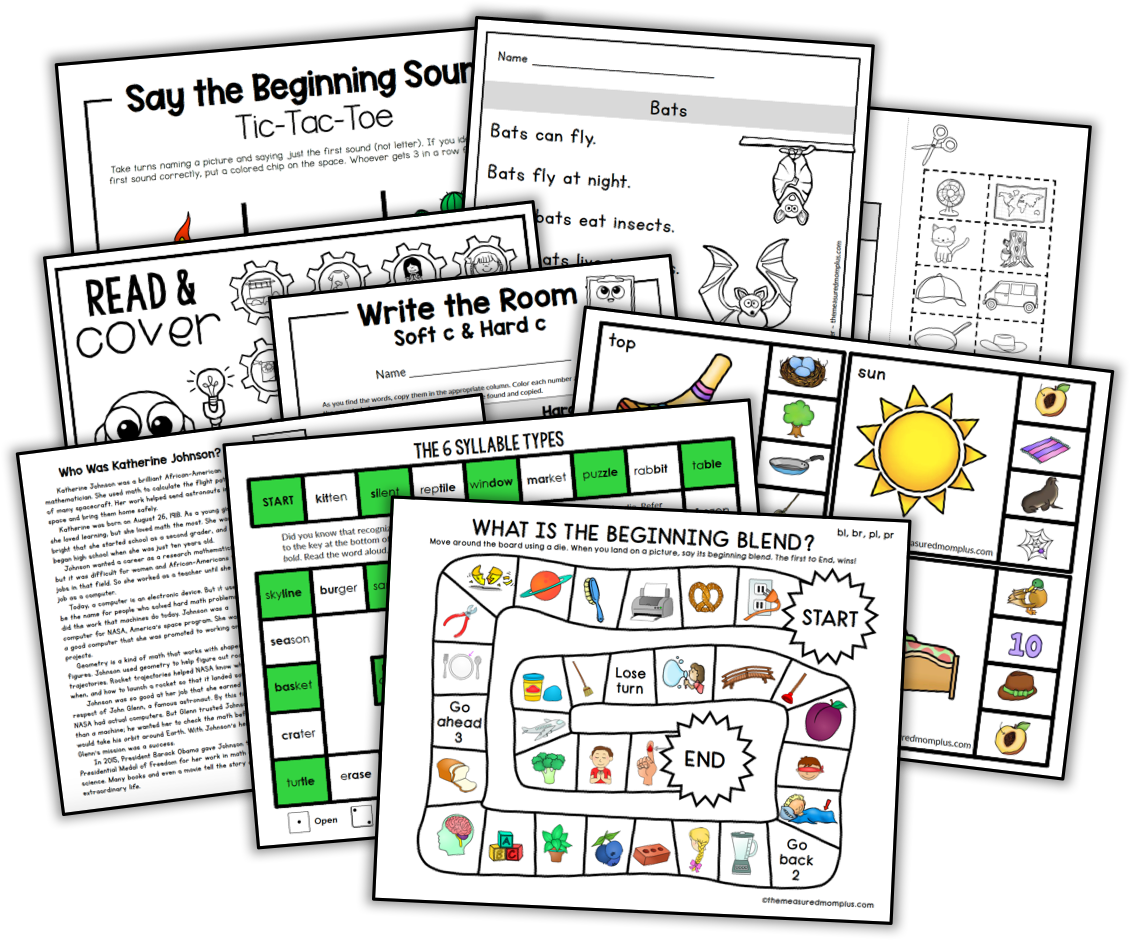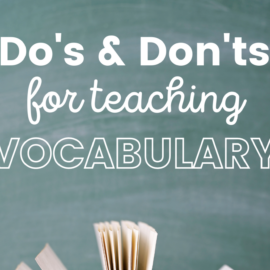Looking for guided reading activities? I’ve got you covered!

This post contains affiliate links.
In my 10-part guided reading series, we’ve already covered a lot of ground:
- 10 reasons why guided reading is important
- Understanding the guided reading levels
- Where to find books for guided reading
- The parts of a guided reading lesson
Today we’re going to look more closely at the parts of a lesson and give sample activities to get you started.
Let’s dive in!
Before Reading Activities

- As the teacher, you’ll choose an appropriate text for the group. Make sure it’s at a slightly higher level than what they can read on their own. They should need your help. This is guided reading, after all.
- In advance, prepare a teaching point, discussion questions, and (if desired) an extension such as word work or guided writing.
- Before the students begin reading, introduce the text. You might introduce new concepts or vocabulary words, give a brief synopsis of the book, call attention to a new phonics pattern, have your learners do a picture walk or make predictions, and/or set a purpose for reading.
During Reading Activities

- After you introduce the text, students will read it in its entirety – on their own. No round robin reading, please! If you’re concerned about noise, you might want to invest in some whisper phones.
- As the students read, you’re going to be listening in and taking notes. This is your chance to really observe your readers. What phonics skills do they know/ not know? What strategies as they using as they read? How is their fluency?
- Another reason to listen in is to offer coaching and support as students need it. Not sure what to say? I’ve got a list of prompts right here. (Get a longer list inside the free download at the end of this post.)
Prompts to support students as they read
- Find the part that’s not quite right.
- What other word do you know like that?
- Cover the beginning/ending. Now what word do you see? Put the parts together.
- Show me the part that’s confusing.
- Tell me about what you read in just one sentence.
- This word has more than one meaning. What do you think it means here?
- Make your voice show that this is interesting.
- Notice the punctuation when you read.
After Reading Activities

After the students finish reading, engage them in a discussion about the book. Be sure to refer to those high and low level questions you prepared ahead of time. Here are some sample questions to get you started (get more in the free download).
Sample discussion questions
- Who do you think is the most important character? Why?
- Give one word that describes the main character. Why did you choose it?
- What clues in the pictures show you how the character is feeling?
- Point to a clue in the picture that shows where the story takes place.
- Name the events of the story in order.
- What is one fact you learned from this text?
- What do you think is the most important thing the author wanted you to know about ____?
You’ll also want to make a specific teaching point that will help your students as they read future texts. You’ll find a full page of possible teaching points in the download at the end of this post. Here are a handful, in order from simplest to more challenging.
Sample guided reading teaching points
- Reading from left to write
- Hearing rhyming words
- Blending and segmenting onsets and rimes
- Making personal connections
- Decoding CVC words
- Retelling the story with support
- Telling what you learned from nonfiction
- Decoding longer words
- Making inferences
- Describing the author’s point of view
As time allows, you’ll conclude the lesson with word work or guided writing.

Sample word work activities
- Name puzzles
- Sorting or matching letters
- Reading, making, and/or writing simple sight words
- Counting phonemes using sound boxes
- Making plurals
- Making possessives
- Working with homophones and homographs
Sample guided writing activities
- Sentence dictation
- Writing a sentence about the beginning, middle, and end
- Writing about the problem and solution
- Writing about a charcter’s feelings
- Writing facts about a topic
- Comparing/contrasting characters, events or ideas
And there you have it!
Want a free guide?
Download the guide below for sample teaching points, question prompts, word work activities, and more!






Erica B.
Thank you so much for this! I have to write a guided reading lesson plan for my major and I just didn’t get the way my professor explained it.
Anna G
I’m so glad this was helpful, Erica!
Marcy
Thank you!
Anna G
You’re welcome, Marcy!
Margaret Lewis
Thanks very much for your free teaching resources! My after school reading program will be enriched with all of these materials!
Anna G
You’re very welcome, Margaret!